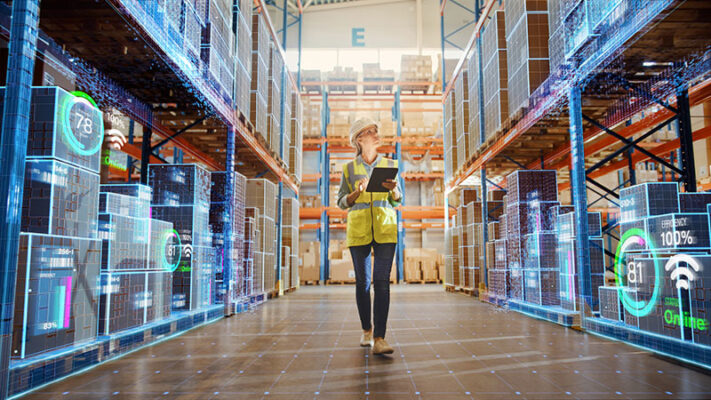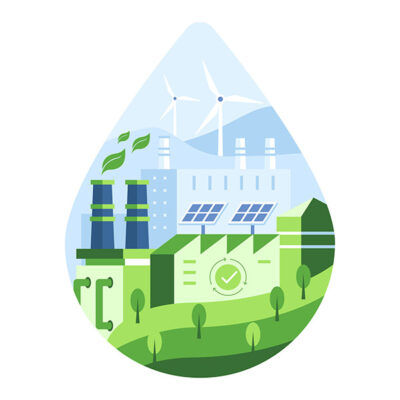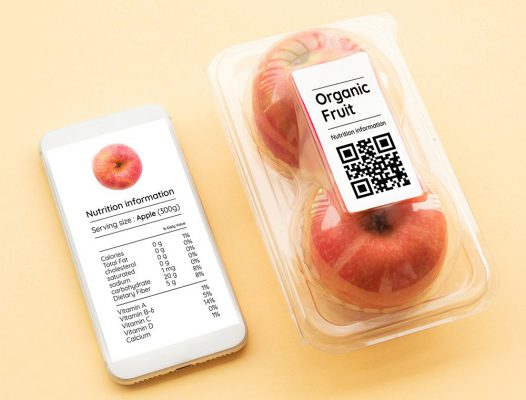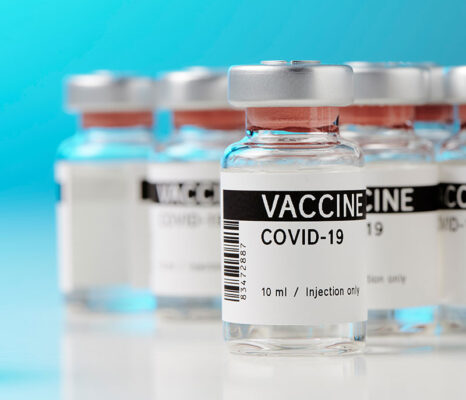FMCG Embraces IoT-Enabled Supply Chains to Stay Competitive
By Joe Braga
March 26, 2024
By Joe Braga
March 26, 2024

The range of smart devices, from electronics to perishable goods, is expanding as new technologies become available. Fast-moving consumer goods (FMCG) companies are using Internet of Things (IoT) devices and networks to boost household item sales. In addition, they are utilizing IoT technologies to improve global supply chain management and manufacturing of these goods.
Consumers are now expecting devices to talk to each other. According to Research and Markets, the global FMCG packaging market is projected to reach $656.3 billion by 2030.
Huge demands inevitably leave FMCG manufacturers with several issues. Supply chain management needs end-to-end visibility of materials and goods at all production and delivery stages.
IoT-enabled supply chains can provide this visibility and safeguard goods in transit. Manufacturers must invest in IoT supply chain solutions to meet these demands and stay competitive.
ABI Research delivered a report on Industry 4.0, known as smart manufacturing. This report explores what drives and prevents digital technology adoption, such as real-time visibility and sustainability. It uncovers the trends creating tension across key markets like FMCG in manufacturing.
Let’s look at four major pressures FMCG manufacturers face due to high demand.

Manufacturers must oversee the demand while facing the rising costs of raw materials. They must also deliver the required ingredients regardless of adverse conditions or staffing issues. Real-time asset tracking and visibility across the supply chain are critical.
Real-time visibility can enable smarter supply chains in three ways:
Digital threads enable a virtual view to connect and track a product’s life cycle from design to manufacturing to end of life. It enables a seamless flow of information across the entire life cycle for traceability and collaboration.

Sustainability for the environment is a top priority. FMCG manufacturers are feeling the heat from Environmental, Social and Governance (ESG) criteria for sustainability and waste management. Factories are pressured to use less water and energy. They must also reduce material and resource waste and promote responsible consumption.
Ericsson, a global leader in information and communications technology (ICT), leverages IoT sensors to shut off lights and heat, saving energy. They use high-efficiency plumbing fixtures and collect and reuse rainwater at their facility. Ericsson experienced a 75% reduction in indoor water use.

FMCG manufacturers face pressures for eco-friendly and recyclable packaging. Still, they need the right resources and technology to integrate sustainable practices on production lines. These practices could involve eco-friendly materials, renewable energy sources and efficient recycling systems.
FMCG brands that use smart packaging can enhance consumer engagement while creating a custom experience to boost value. Technologies such as QR Codes on the packaging enable consumers to avoid paying at the cash register.
Embedded smart sensor technologies can be added to monitor the freshness of perishable goods. IoT technologies empower manufacturers to make data-based decisions to optimize operations and reduce waste for more sustainable practices.
In the competitive world of FMCG, intellectual property is a valuable asset. Manufacturers are acutely aware of the threats posed by cyberattacks. The risk of having proprietary designs stolen or copied, particularly in the digital world, is a significant concern.
Data privacy is another critical aspect of cybersecurity. FMCG manufacturers manage vast amounts of sensitive consumer data, such as personal information and behavioral patterns. They must protect this data from unauthorized access while ensuring compliance with data privacy regulations to maintain customer trust.
OEMs can collaborate remotely while protecting intellectual property. It has an overall availability of 99.904% and a KPI of 98.5% to provide regular updates to the server to prevent cyberattacks.
IoT digitalization plays a key role in resolving FMCG manufacturers’ pressures. However, many have tried to modernize but have yet to succeed. Finding the right technology and partner to help make this transition possible is crucial. In addition, connecting an organization to the live production cycle with a holistic, end-to-end view of the supply chain is essential.
According to ABI Research, FMCG manufacturers will reach a $23.8 billion investment in digitalization by 2030.
The three key drivers of this investment are:
FMCG manufacturers are investing more in device and application platform services. They need a comprehensive view of their operations to make data-driven decisions.
As FMCG companies embrace digital, they are also facing heightened cybersecurity risks. Manufacturers are investing in security services to protect their valuable assets and customer data.
FMCG manufacturers are connecting their devices, assets and systems to enable seamless data exchange and real-time insights. This requires investment in connectivity solutions.
These drivers fuel the growth of digital in the FMCG market to stay competitive and thrive in the digital transformation age.

Beyond is one of the world’s first true cloud-based IoT providers. It supplies pharmaceutical and biological cold chain monitoring solutions. Cold chain solutions provide continuous monitoring of temperature-sensitive goods worldwide. It sends urgent alerts to prevent temperature fluctuations that could harm or spoil products.
The pandemic and lockdowns in 2020 disrupted immunization programs for preventable diseases like polio and measles. More than 117 million children worldwide were at risk of missing their measles vaccines in over 24 countries.
Beyond chose Telit Cinterion as their IoT technology partner. They required secure, dependable global connectivity to ensure vaccines maintain the right temperature through the last mile.
We provided Beyond with IoT SIMs and global connectivity for complete redundancy. They also used the cellular LPWA modules to reduce costs and extend battery life with Power Save Mode (PSM) and extended Discontinuous Reception (eDRX). This IoT technology enabled Beyond to provide seamless cold chain monitoring for the expanding COVID-19 vaccine distribution.
Today, Beyond’s technology is even faster and more cost-effective. Its technology is deployed in 112 countries.
Not every manufacturer is starting with a new facility. Some are using existing equipment. It’s a matter of integrating the old with the new technology, like artificial intelligence (AI) and machine learning (ML).
Companies like Telit Cinterion can bridge gaps many manufacturers have in their processes. With over 20 years in IoT, our experts focus on making systems work together. Each factory is a new concept to analyze. Specialized equipment can be brought in to integrate older equipment into the new technology.
For instance, industrial IoT (IIoT) platforms can update factory floor operations. They integrate traditional IT machines with sensors to connect devices with enterprise systems and databases, even in adverse conditions. Cellular low-power wide-area (LPWA) networks offer IoT connectivity at a lower cost.
The factory can be converted to a private wireless 5G network to increase reliability and security and eliminate wires and cables. IoT-enabled supply chains with private or public 5G networks benefit from high speeds, ultralow latency and reliable coverage.
5G modules and data cards allow 5G to be designed into bandwidth-intensive applications. These include operations like real-time monitoring or remote machine operation. Augmented reality (AR) can guide technicians through maintenance.
deviceWISE®, powered by Telit Cinterion, can get near real-time bidirectional data and analysis from any machine or sensor. Manufacturers collect and visualize machine data in real time without writing custom code and access it from one intuitive web portal.
Telit Cinterion’s IoT platforms allow teams to focus on making systems work together to produce the volume of goods expected with efficiency and quality.
Speak with our experts about IoT-enabled supply chains to optimize your operations with IoT and maintain a competitive edge.
Editor’s Note: This blog was originally published on 7 February 2020 and has since been updated.